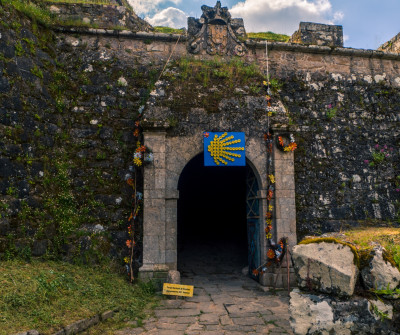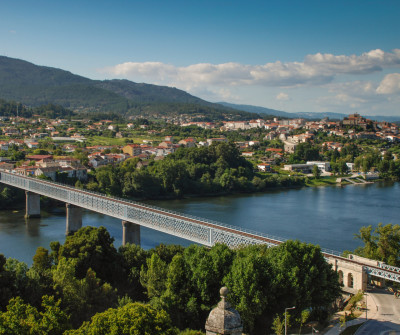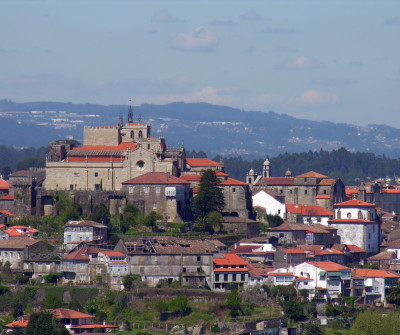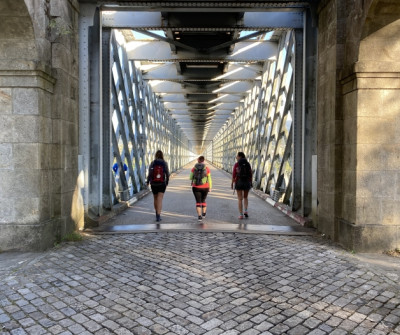Last stage of the Portuguese Way in Portuguese lands. This fifth day will be very different from the previous ones, more urban and equipped with services in each section. Our final point will be Tui, already in Galicia.
READ MORE
However, some pilgrims prefer to spend the night in Valença do Minho. The International Bridge over the Minho River separates the last Portuguese population from the first Galician. Both Tui and Valença have a rich artistic, cultural and gastronomic heritage, in addition to having numerous services, so both options are just as good. We leave it to your choice.
The departure from Rubiaes is made by crossing the Roman-medieval bridge over the Coura river in the direction of Sao Bento da Porta Aberta. There we find the sanctuary of the same name, built between the seventeenth and eighteenth centuries. The main altar of the temple is dedicated to Sao Bento, as well as the historiated tiles of the main chapel.
The route continues for three kilometers to Fontoura, alternating wooded sections with other cobblestones and asphalt, which will be the usual trend for the stage. The pilgrim must pass through Paços and cross the Roman Ponte Pedreiras before reaching Pedreira. Without further complication and only 5 kilometers away we are already in Valença do Minho. Whether we are going to spend the night here or if we continue to Tui, we recommend visiting the Fortress of Valença.
This will be the direction that those who wish to sleep in the pilgrim hostel of Valença should take. Those who prefer to continue to Tui, should follow in his footsteps towards the International Bridge over the river Miño. Before its construction, pilgrims had to take a boat to cross this natural border between Portugal and Galicia.
The bridge was built in the second half of the 19th century, entering service in 1885. Since the new International Bridge was opened in 1995, much larger and more modern, the infrastructure barely has traffic, making the experience more pleasant for the pilgrim. Once in next to the Bridge we only have to cross it by its pedestrian walkway. At its exit we take the Paseo del Miño and ascend directly to the old town of Tui.
What to see and do in Valença do Minho? As we told you before, you should not follow your Path without visiting the Fortress of Valença. It is a small city surrounded by an incredible defensive system that is preserved in perfect condition. It has four access gates, 12 bastions and the 12th century wall. In addition to enjoying its typical buildings and visiting a church –such as Nosa Senhora dos Anjos or Santo Estevao-, Valença is characterized by its many shops where it is almost impossible not to make a purchase.
What to see and do in Tui? Pilgrims who decide to end their stage in Tui will also be able to enjoy many attractions, in addition to the well-deserved and necessary rest. Among all its rich cultural heritage, the Cathedral of Santa María stands out, whose crenellated towers make it an icon of the Portuguese Way.
Its construction dates from the 13th century and stands out for its appearance of a castle or fortified building. But although the Cathedral of Tui is one of its icons, it is not the only attraction of the town. Its beautiful old town, which we will visit in part during the next stage, is well worth a walk. In it we will find the Monastery of Santo Domingo (14th century), the church of San Francisco and the convent of the Poor Clares.


 Filter
Filter


